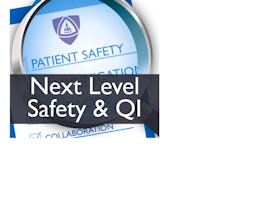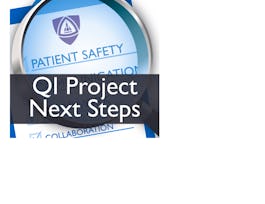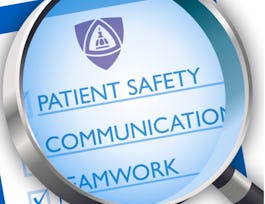How will you know if your patient safety and quality project is meeting its objectives? Peter Drucker once said “What gets measured, gets managed.” In this course, students will learn why measurement is critical to quality improvement work. Equally important, they will learn which data sources provide the most meaningful information and tools for how and where to locate them. Finally, students will learn how to interpret data from their patient safety and quality projects to guide and modify them during implementation to maximize their chances of making a difference for patients.


Measuring the Success of a Patient Safety or Quality Improvement Project (Patient Safety VI)
This course is part of Patient Safety Specialization
Taught in English
Some content may not be translated

Instructor: Matt Austin
4,376 already enrolled
Included with 
Course
(79 reviews)
What you'll learn
Describe why measurement is important to quality improvement work.
Locate external sources of quality and safety measures and associated performance data.
Identify those data that are useful for monitoring and evaluating quality improvement projects.
Skills you'll gain
Details to know

Add to your LinkedIn profile
3 quizzes
Course
(79 reviews)
See how employees at top companies are mastering in-demand skills

Build your subject-matter expertise
- Learn new concepts from industry experts
- Gain a foundational understanding of a subject or tool
- Develop job-relevant skills with hands-on projects
- Earn a shareable career certificate


Earn a career certificate
Add this credential to your LinkedIn profile, resume, or CV
Share it on social media and in your performance review

There are 4 modules in this course
In this module, learners will develop an understanding of what is performance measurement in healthcare, what constitutes a “good” performance measure, and basic frameworks that have been used for categorizing measures. Learners will become familiar with some of the well-known entities involved in performance measurement in healthcare and key challenges in the field.
What's included
8 videos1 quiz
In this module, learners will gain knowledge of the primary audiences for publicly reported performance measure sand some of the key measures that are currently reported. Learners will be exposed to some of the key websites that publicly report performance data and hear from a health system leader about some of the benefits and challenges of having a hospital’s quality and safety performance publicly available.
What's included
10 videos1 peer review
In this module, learners will develop an understanding of the different tools that are available to analyze data used in quality and safety improvement work and how the data can be visualized for different audiences.Two case studies will be shared to demonstrate how these data analysis and visualization tools can be used in a real-life setting.
What's included
6 videos1 quiz
In this module, learners will be exposed to how mixed-methods research, which includes integrating qualitative and quantitative data together, can be used successfully in quality improvement projects.Learners will also become familiar with how data and measures are used to evaluate the success of a quality improvement project. Two case studies will be shared to demonstrate how these concepts have been used in real-life quality improvement projects.
What's included
5 videos1 quiz
Instructor

Offered by
Recommended if you're interested in Healthcare Management

Johns Hopkins University

Johns Hopkins University

Johns Hopkins University
Why people choose Coursera for their career




Learner reviews
Showing 3 of 79
79 reviews
- 5 stars
79.74%
- 4 stars
16.45%
- 3 stars
1.26%
- 2 stars
0%
- 1 star
2.53%
New to Healthcare Management? Start here.

Open new doors with Coursera Plus
Unlimited access to 7,000+ world-class courses, hands-on projects, and job-ready certificate programs - all included in your subscription
Advance your career with an online degree
Earn a degree from world-class universities - 100% online
Join over 3,400 global companies that choose Coursera for Business
Upskill your employees to excel in the digital economy
Frequently asked questions
Access to lectures and assignments depends on your type of enrollment. If you take a course in audit mode, you will be able to see most course materials for free. To access graded assignments and to earn a Certificate, you will need to purchase the Certificate experience, during or after your audit. If you don't see the audit option:
The course may not offer an audit option. You can try a Free Trial instead, or apply for Financial Aid.
The course may offer 'Full Course, No Certificate' instead. This option lets you see all course materials, submit required assessments, and get a final grade. This also means that you will not be able to purchase a Certificate experience.
When you enroll in the course, you get access to all of the courses in the Specialization, and you earn a certificate when you complete the work. Your electronic Certificate will be added to your Accomplishments page - from there, you can print your Certificate or add it to your LinkedIn profile. If you only want to read and view the course content, you can audit the course for free.
If you subscribed, you get a 7-day free trial during which you can cancel at no penalty. After that, we don’t give refunds, but you can cancel your subscription at any time. See our full refund policy.


